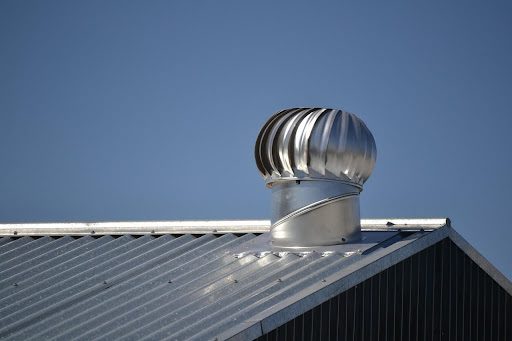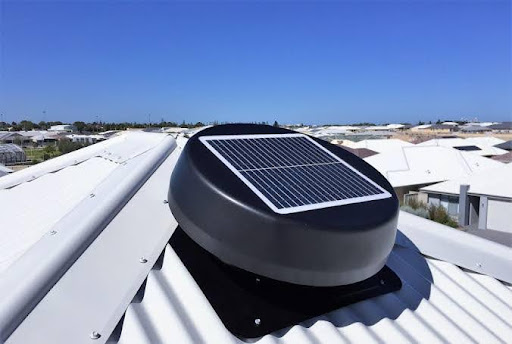If you’ve ever popped your head into the roof cavity on a hot Adelaide afternoon, you’ve likely felt the stifling heat trapped up there. Without proper air movement, this hot air lingers, heats your living space, strains your air conditioning, and encourages the growth of mould and mildew.
So, how do you clear it out? With the right roof ventilation! As South Australia’s trusted roofing specialists with over 100 years of experience, Roof and Render is here to walk you through all the roof ventilation options and every other thing you need to know.
Your roof space is like a giant attic-shaped sponge.
During summer, it absorbs the sun’s heat, which can raise internal temperatures to over 60°C.
Without adequate ventilation, this heat radiates downward into your living areas. In winter, moisture from cooking, laundry, and showering can rise into the ceiling, where poor airflow creates moist air conditions that lead to condensation, rot, and insulation damage.
Proper roof ventilation solves both problems by circulating fresh air through your roof cavity, pushing stale air and hot air out while drawing cool air in from outside. It reduces your reliance on cooling systems, lowers your energy bills, and extends the life of your roofing system.
The science behind it is straightforward: hot air rises because it’s less dense than cold air. A balanced system uses two types of vents: intake vents (usually under the eaves or soffits) and exhaust vents (near the roof ridge or gables).
This setup creates a natural airflow cycle, often referred to as the stack effect. When combined with temperature or wind pressure differences, the air pressure pushes warmer air out while drawing in cool air from below.
Now let’s explore your options:

Still the most recognisable roof vents in Australia, whirlybirds are simple, wind-powered ventilation devices. They spin when wind flows through, creating a vacuum that sucks out hot air and moisture from your roof cavity. They’re mostly used in big buildings such as factories and commercial spaces.
Pros:
Cons:
Despite mixed reviews, whirlybirds remain a popular choice for cost effective and low-maintenance roof ventilation, especially for industrial use and older homes with limited roof space.

Solar powered roof vents are gaining ground in the Australian market thanks to their balance of performance and energy efficiency. These vents feature a built-in solar panel that powers a small exhaust fan during daylight hours.
Pros:
Cons:
If your roof already houses solar panels, solar powered vents integrate seamlessly and offer a smart, eco-friendly solution to rising energy costs.
As the most robust option, electric roof vents use mains electricity to power a fan that constantly extracts stale air and moisture. They’re often the top choice for large homes or buildings with persistent heat or humidity issues.
Pros:
Cons:
Manufacturers report that power vents can be up to eight times more effective than a single whirlybird. If you’re serious about indoor climate control, this might be your best bet.
Not every home needs the most advanced system. Here’s what to consider:
Always consult a local expert who understands Adelaide’s climate and roofing conditions , like the licensed builders here at Roof & Render SA , to get tailored advice.
Improving your roof ventilation is one of the smartest upgrades you can make to your home. Not only can it lower your energy bills, reduce mould risk, and improve comfort , but it also extends the life of your roofing system, insulation, and even your paintwork.
At Roof & Render SA, we assess your roof, home layout, and budget to recommend the right combination of vents and materials , ensuring effective ventilation all year round.
The best option depends on your roof design, climate, and budget. For most South Australian homes, a hybrid system using ridge vents, soffit vents, and solar powered exhausts offers the best balance of efficiency and cost.
Power vents (electric or solar powered) are the most effective at removing hot air, especially in homes with high heat loads or metal roofs. They operate consistently and aren’t reliant on wind.
You can retrofit whirlybirds, box vents, or even solar powered fans. The key is balancing them with intake vents like eave or fascia vents to ensure proper airflow.
Yes , especially in warm climates like Adelaide. Improved roof ventilation can reduce energy bills, prevent insulation damage, and improve indoor air quality.
To learn more about roof ventilation options tailored to your home, or to book a consultation, contact the Roof & Render SA team.
Fill in the form below to book a free consultation at our Colorbond Showroom in Lonsdale.
We will give you a call within 24 hours to organise a time that suits you.
Fill in the form below to book a free consultation at our Colorbond Showroom in Lonsdale.
We will give you a call within 24 hours to organise a time that suits you.